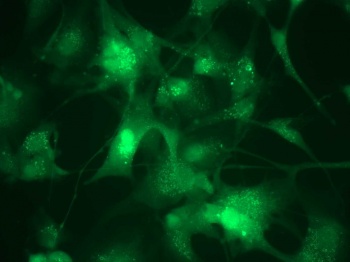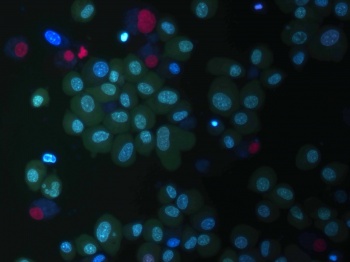Alexandre Teixeira Vessoni
From DNA Repair Lab
| Revision as of 21:02, 10 November 2011 Root (Talk | contribs) (→Resumo do Projeto) ← Previous diff |
Current revision Root (Talk | contribs) (→Research Project) |
||
| Line 10: | Line 10: | ||
| == Research Project == | == Research Project == | ||
| - | Autophagy is a lysosomal-dependent degradative pathway that promotes recycling of cytoplasmic components, such as organelles and proteins, aiming at maintaining cellular homeostasis. | + | Autophagy is a lysosome-dependent degradative pathway that promotes recycling of cytoplasmic components, such as organelles and proteins, aiming at maintaining cellular homeostasis. |
| <br> | <br> | ||
| This process can be activated under different stressful situations, such as starvation, oxidative stress and DNA damage. Deficiencies in this pathway were associated to cardiopathies, cancer, neurodegeneration and aging. | This process can be activated under different stressful situations, such as starvation, oxidative stress and DNA damage. Deficiencies in this pathway were associated to cardiopathies, cancer, neurodegeneration and aging. | ||
Current revision

| Graduate in Biological Sciences (University of São Paulo), develops a PhD project entitled "Autophagy Analysis in response to DNA damage" in the Department of Microbiology, Institute of Biomedical Sciences, University of São Paulo, São Paulo, SP, Brazil.
|
|
[edit] Research ProjectAutophagy is a lysosome-dependent degradative pathway that promotes recycling of cytoplasmic components, such as organelles and proteins, aiming at maintaining cellular homeostasis.

Autophagosomes in glioma cells (U87MG) stably expressing LC3-GFP (lentiviral transduction) can be analyzed under a fluorescence microscope. 
|
|